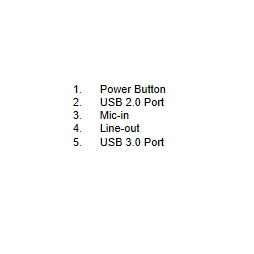The 10 Biggest Cloud Computing Trends In 2024 Everyone Must Be Ready For Now
Worldwide, spending by businesses on cloud computing infrastructure is forecast to top $1 trillion for the first time in 2024. This will be driven by factors such as a growing need to adopt new platforms and as-a-service offerings, including artificial intelligence (AI) services. Mini Pc Ddr4

This is because, in 2024, businesses are looking beyond the time-and-money-saving opportunities of cloud migration. Emerging use cases across all industries make it clear that it can often be the key to becoming more innovative, agile and successful.
For many businesses, there will still be significant challenges – often revolving around security and data protection issues. However, new models that seek to offer best-of-all-worlds solutions, like hybrid cloud and federated cloud systems, will continue to break down barriers.
In 2024, cloud will continue to be a dynamic and exciting driver of innovation and opportunity. Here’s my overview of what will be the most significant trends in this field.
Cloud infrastructure has a big role to play in making AI available to the masses, along with all the economic and social benefits that it’s expected to generate. AI models, such as the large language model (LLM) that powers ChatGPT, are trained on huge amounts of data, using vast amounts of compute power. Most businesses don’t have the resources to do this themselves, but by accessing AI-as-a-service through cloud platforms, they are able to leverage this powerful, transformative technology.
The number of large organizations with a multi-cloud strategy (i.e., they buy cloud services from more than one provider) is predicted to rise from 76% to 85% during 2024. It offers cost and flexibility advantages but adds complexity to data governance and integration with legacy systems. Multi and hybrid cloud (mixing cloud with on-premises infrastructure) are advanced infrastructure solutions that will continue to grow in popularity as organizations seek to balance security with flexibility and pick and choose the services they need.
During 2024, organizations will increasingly look to leverage real-time data in order to get up-to-the-minute insights rather than acting on outdated, stale information. At the same time, more and more of the data we consume will come in the form of streamed data – movies and music from Netflix and Spotify, video data from Zoom or Teams calls, and new forms of streamed entertainment such as cloud gaming. This means data storage that prioritizes instant access, such as Flash and solid-state storage devices, will become increasingly in demand by cloud customers.
As well as AI mentioned above, adopting cloud computing technology can be a gateway to many other transformative technologies such as the Internet of Things (IoT), blockchain and quantum computing. By eliminating the need to invest directly in architecture and infrastructure, businesses are able to launch quick-win/fail-fast initiatives to evaluate the benefits of emerging technologies more easily than ever in 2024, thanks to cloud computing.
Encryption, authentication and disaster recovery are three functions of cloud computing services that will be increasingly in demand as we face up to the evolving threat landscape of 2024. Data thefts and breaches are increasing in frequency and severity as hackers develop new AI-powered forms of attack, and any system that has to be accessible to a human is always going to be at risk from social engineering attacks. This means security and resilience are high on the agenda of all cloud providers and customers.
The big cloud service providers have all made net-zero commitments, not just for their own operations but in order to help customers who use their services to reduce their carbon footprints. Amazon has pledged to achieve zero emissions by 2040, and Microsoft aims to beat this by ten years. Along with Google, they have also all stated their intention to generate 100 percent of the energy used in their operations from renewable sources. Whether they make it remains to be seen, but the push for greener and less environmentally impactful cloud computing will be a strong trend in 2024.
Today, low-code/ no-code tools are opening up the possibility for non-technical people to create applications that previously would have required trained software engineers. Likewise, cloud providers are leveraging drag-and-drop interfaces and natural language tools to eliminate the need for advanced technical skills and “democratize” the deployment and management of cloud services and infrastructure.
Cloud privacy refers to the ongoing development of technological, regulatory and legislative solutions designed to help businesses leverage cloud while ensuring their customers can trust that their data is fully protected. When a business uses a cloud service, it generally involves passing data to a third party – usually the cloud service provider. Managing the privacy implications of this will continue to be an important theme in cloud computing during 2024.
Serverless is a model of cloud computing service that eliminates the need for businesses to manage their own servers. While a typical cloud service might charge the business for the number of servers that they want to host their infrastructure on, under a serverless model, the business simply pays for the resources they directly use. This drives efficiency by eliminating the need to pay for servers even when they are not in use and frees up the business's time to spend on their core activities.
Edge computing is a cloud-related paradigm in which information is processed as close as possible to the location where it’s collected. An example might be a wearable real-time heart monitor designed to pick up arrhythmias. As most of the data it collects would be “normal” heart rhythms, sending it all to the cloud for analysis, then back to the user to tell them everything is fine, would be a waste of bandwidth. Analyzing the data on the device itself eliminates this cost and also means the user can be alerted more quickly if anomalous data is detected. In 2024, smaller, more power-efficient processors, more memory-efficient algorithms, and advanced networks like 5G all contribute to making edge increasingly viable for a growing number of applications.

8 Core Mini Pc You can read more about future tech and business trends in my books, The Future Internet: How the Metaverse, Web 3.0, and Blockchain Will Transform Business and Society, Future Skills: The 20 Skills And Competencies Everyone Needs To Succeed In A Digital World and Business Trends in Practice, which won the 2022 Business Book of the Year award. And don’t forget to subscribe to my newsletter and follow me on X (Twitter), LinkedIn, and YouTube for more on the future trends in business and technology.